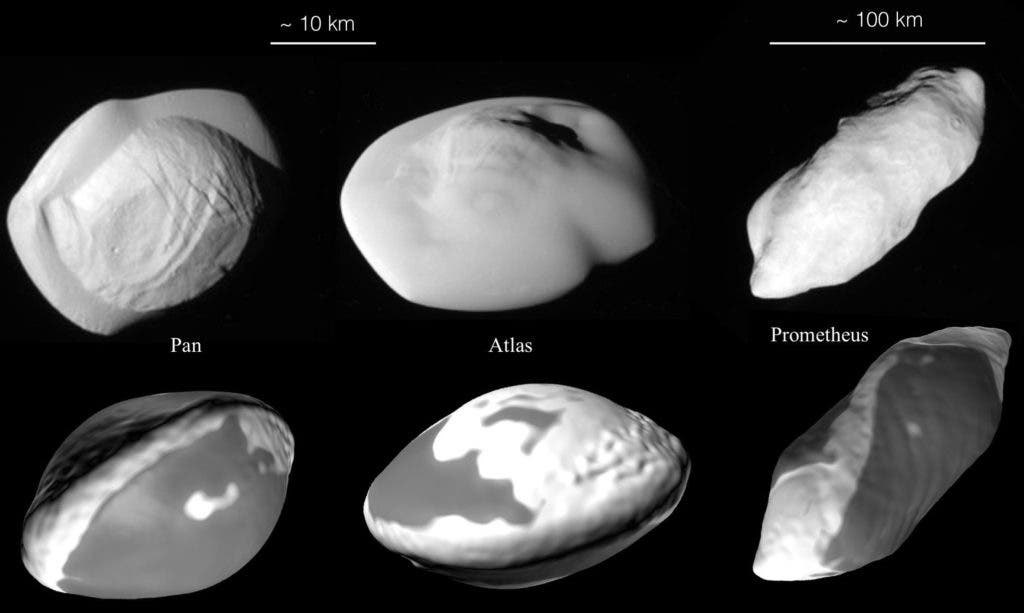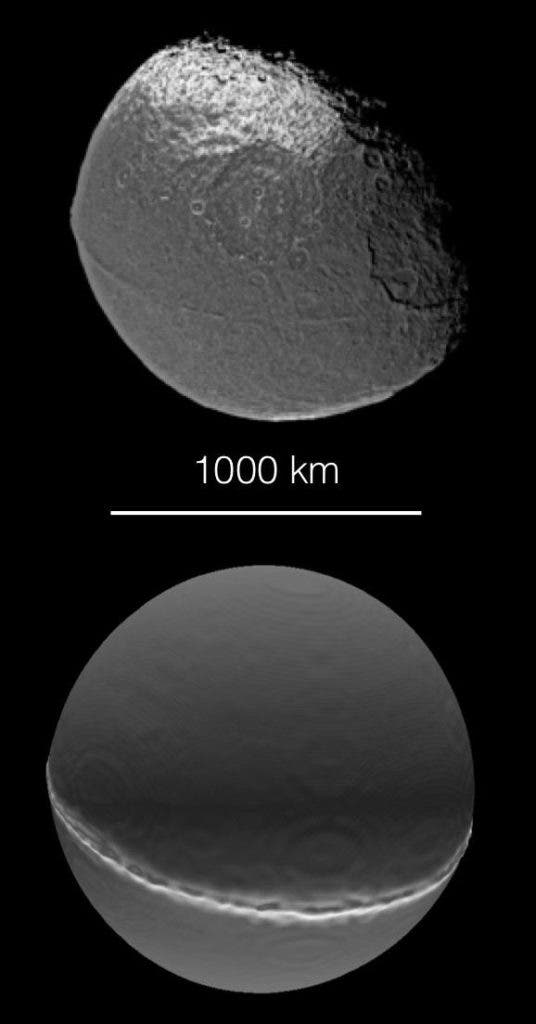When Martin Rubin, an astrophysicist at the University of Bern, saw images of Saturn’s small inner moons, it reminded him of something rather odd: food — variations of pasta, to be more exact. That inspired him to further study these moons, and now, he has a good idea of how they formed.

The top row shows 3 small moons of Saturn imaged by the Cassini spacecraft. Shown at the bottom are computer model outcomes. Image credits: NASA/JPL-Caltech/Space Science Institute / University of Bern.
The photos Rubin saw were from the Cassini mission, one of the most ambitious efforts in planetary space exploration, which sent a probe to study the planet Saturn and its system, including its rings and natural satellites. Among Cassini’s 2017 images, something caught Rubin’s eye: something which NASA called “flying-saucers with diameters of about 30 km” — extremely small moons, which do look a bit like ravioli or spaetzle.
Saturn’s moons are numerous and diverse, ranging from tiny moonlets, less than 1 kilometer across, to the massive Titan, which is bigger than the planet Mercury. Saturn has a total of 62 moons with regular orbits, 24 of them being regular satellites. The extremely small, inner moons, however, are believed to originate from Saturn’s rings, a thin disk of ice and rock located around the planet’s equatorial plane.
Rubin asked his colleague Martin Jutzi whether they could be the outcome of collisions, instead of being formed through gradual accretion of material around a single core. Together, they started developing models of how collision-formed moons would look, and found that the models closely replicated the real thing.
Saturn isn’t really a perfect sphere, but rather oblate. Combining this shape with its huge mass makes it very difficult for any satellites to escape the gravitational attraction around Saturn’s equatorial plane.
Although they weren’t looking for it, researchers also found a possible explanation to the mystery of Saturn’s third-largest moon, Iapetus, explaining its unusual shape.

Iapetus might also have formed through a head-on collision of two bodies. Image credits: Adrien Leleu, Martin Jutzi and Martin Rubin/ University of Bern.
“Our modelling results suggest that these features may be a result of a merger of similar-sized moons taking place with a close to head-on impact angle, similar to the smaller moons,” the researchers summarize.
Lastly, this study also points out that Saturn could serve as a sandbox system, to enable us to understand this type of collision in other environments.
“A significant fraction of such merging collisions take place either at the first encounter or after 1-2 hit-and-run events,” the authors summarize in their paper published today in Nature Astronomy. “In this respect, Saturn is almost a toy system to study these processes,” says Martin Rubin.
Journal Reference: A. Leleu, M. Jutzi, M. Rubin: “The peculiar shapes of Saturn’s small inner moons as evidence of mergers of similar-sized moonlets”, Nature Astronomy. doi: 10.1038/s41550-018-0471-7.









